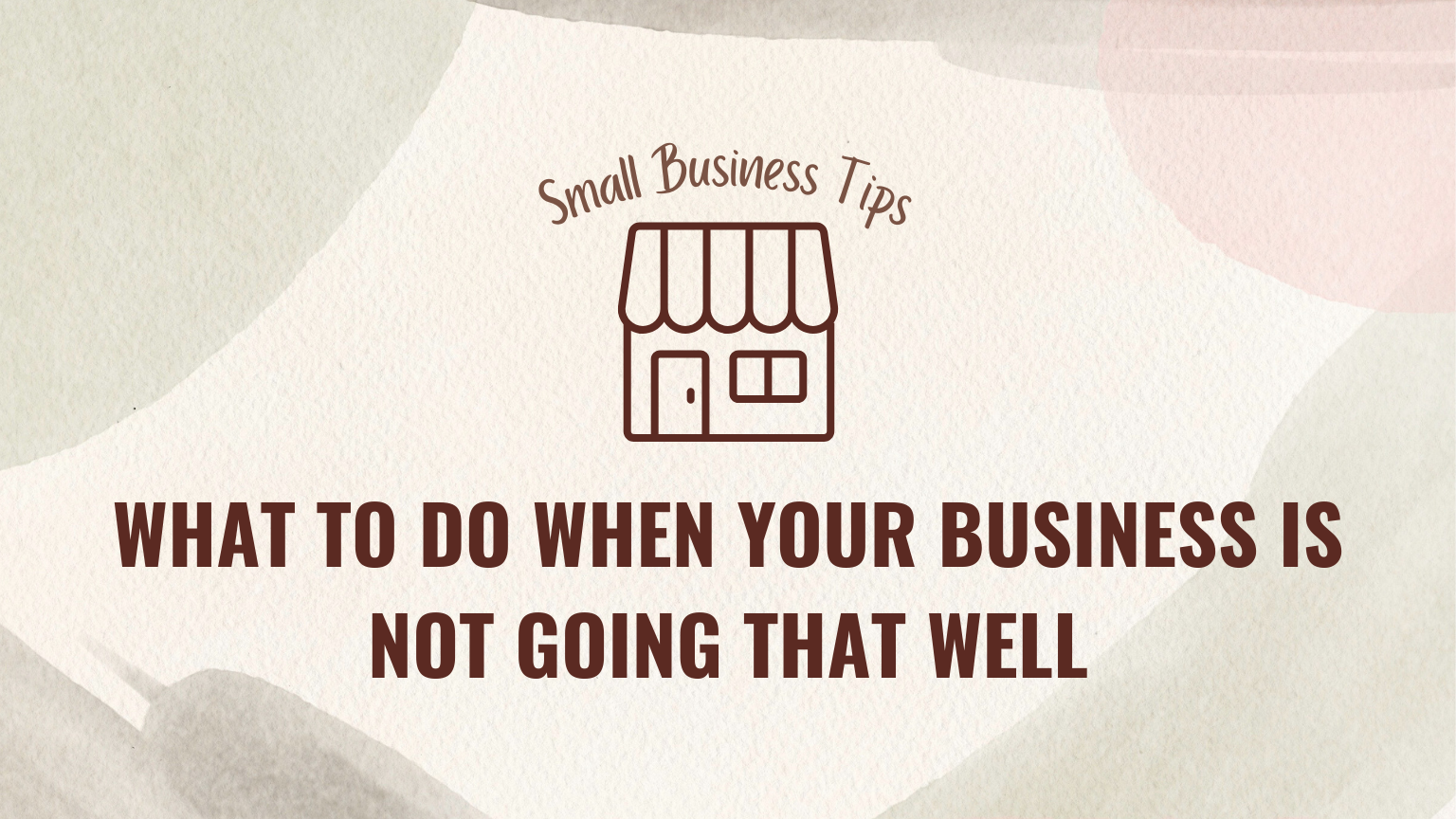In the unpredictable world of small business, challenges are inevitable. Whether it’s a shifting market landscape, economic downturn, or unexpected challenges, every small business owner encounters moments when the business isn’t performing as expected. This article aims to offer small business tips to guide you through the labyrinth of tough times, offering actionable tips to navigate the storm when your business hits a rough patch. Let’s dive in and discover how to steer your business toward success, even in the face of uncertainty.
Analyze Customer Feedback and Market Trends
Remember that your customers and the broader market can provide absolutely invaluable insights. Ask your customers for feedback to understand their needs, preferences, and pain points. Especially the pain points of your customers will be something you can address – whether with a product or service improvement. Pay attention to recurring themes and patterns. At the same time stay informed regarding trends in your niche (broader ones as well – you might be the first to incorporate them into your niche). Stay informed about shifts in consumer behavior, emerging technologies, and changes in your industry landscape. This makes it easier for your business to adapt if things are slow or going downhill.
Actionable steps
- Make a survey asking your customers about their needs, preferences and pain points in your niche. Search for patterns and gather ideas to new products or improvements.
- Read about industry trends regularly.

Pinpoint Specific Areas of Underperformance
Another useful small business tip is to take a detailed look at each area of your business. Do you have trouble marketing your products to new customers? Or is it the retention of customers that proves to be hard? How about the prices or your products – have you compared them to your competitors? Pinpointing specific pain points helps us look for specific solutions. It is time consuming and sometimes painful, but the results can help your business thrive in the future.
Actionable steps
- Take a deep look at every aspect from your business from supplies, making products, marketing, finances, services you offer. What pain points can you identify?
Brainstorming Solutions
Now that you have (hopefully) identified areas that need improvement it’s time to set aside a good chunk of time for brainstorming solutions. Take a piece of paper and write down all the areas you need to work on and start writing down ideas – whatever comes to your mind, without judging whether it is good or bad. Just write it all down. Take advantage of this solo brainstorming session to explore ideas that resonate with you. Tapping into your own insights can yield innovative approaches. Now that you have it all written down, it’s time to tap into the knowledge of others.
Look for platforms, forums or social media accounts that might help you gain insight into areas you want to improve. There is also always the good old Google – search what you need, I am sure there are other individuals who have faced similar challenges. See what they did to overcome them. Write it all down as well. Finally it is time to organize it all – look at both your ideas and those of others. What is feasible? What can be done now to improve your business? Make a plan and list things that you can do now, in a month, this year, during next 3 years. Start putting all these small business tips into actions.
Actionable steps
- Set aside a block of time and sit down with a piece of paper. Think on areas of your business that need improvement and write down all ideas that come to your mind without judging or labeling them.
- Search Google, forums, social media for individuals that faced similar challenges as you. Learn from their experience, see what they did to overcome those issues. Write down all the ideas you find on a new piece of paper.
- Take both papers and look through all the ideas – some might pop up in both! See what is feasible for you and make an action plan. Take w new piece of paper and divide it into columns – write down actions that you can take to improve your small business now, in next three months, in a year, in next 3 years.
- Take action!

Experiment with all the small business tips you have discovered
Implementing small changes can serve as a powerful strategy and might have a big impact on your small business in the long run. Start by testing modifications in your products or services on a small scale. This allows you to gather valuable insights into customer preferences and adapt accordingly. Experimenting with pricing strategies is another avenue to explore. Whether it’s adjusting price points or introducing new pricing models, observe how these changes impact customer behavior and your overall revenue.
Exploring new marketing tactics can be a game-changer for your business. Also try out different marketing channels to diversify your reach. Whether it’s social media platforms, email campaigns, or collaborations with influencers, each channel holds the potential to tap into a unique audience. Assess the effectiveness of each channel by tracking metrics such as engagement or conversion rates. Additionally, consider launching promotions or discounts to create a sense of urgency and attract new customers. By experimenting with marketing tactics, you broaden your business’s visibility and valuable insights into what your target audience likes.
Continuous Learning
We live in a fast paced world and continuous learning is a must to stay relevant. Take a proactive approach to skill development. Identify areas that you want to improve or that would be beneficial for your business. Whether it’s mastering a new software, refining marketing strategies, or learning a new technique, there are so many resources out there – you just have to look for them. Online courses, workshops, YouTube tutorials are excellent resources to not only expand your skill set, but also to stay ahead of the curve. My personal favorite platform for learning different topics is Skillshare. Another part of continuous learning is keeping up with trends and news in your niche – subscribe to newsletters, follow social media accounts (also of your competition!) and regularly visit websites and gather all those useful small business tips – but do not forget to actually turn them into actions!
Actionable steps
- Write down areas that you want to improve in (both what you are interested in and what might not be “riveting”, but would benefit your business).
- Choose the first topic you want to start with.
- Search for online courses, books, workshops, tutorials on that topic.
- Schedule a block of time to learn – either every day or once a week. Stick to it and do the courses.
- Once you finish a course or tutorial – sit down and write down the knowledge you gained from it and any actionable small business tips you can do to improve your business. It will help you both make an action list and retain what you have learned before you move onto the next topic.

Worst Case Scenario – Pivoting and Finding a New Niche
Are there challenges that seem insurmountable, or looks that your offerings are falling out of favor with your audience and customers? Pay close attention to key performance indicators, market feedback and what customers actually need (surveys and polls are incredibly useful for that). Acknowledging the necessity for change is the first step towards steering your small business onto a more promising course. It might be time to consider a strategic pivot and finding a new niche.
Evaluate your own strengths, skills, and the unique value proposition you bring to the table. Consider how all of these can be leveraged in a different market space or industry segment. Make a research in other niches identify gaps and unmet needs of potential customers. Can you offer a solution to their problems? Remember that finding a new niche is not the end of the world – it’s just a new opportunity for your business to grow!
Actionable steps
- Analyze key performance indicators (like sales or conversion), what is the current market situation (is there a recession going on?) and what your customers are telling (or not telling) you.
- Do research at finding a new niche – analyze competition, identify gaps and customer needs that are not met.
- Do you have a solution for those needs? Research further into whether people would be interested in your solution – polls and surveys are always useful.
The reality of running a small business is having to face challenges head-on constantly. As we navigate through all the hurdles, it is crucial to remember that tough times do not equal defeat. They push us towards learning, growing and innovating (often through sweat and tears). This guide has explored many small business tips on what to do when your business is not going that well. As a small business owner, your ability to pivot, experiment, and learn from challenges is a unique strength. From analyzing your business’ performance, brainstorming solutions, experimenting, continuous learning, and – if needed – changing your niche. All of these will empower you to not just survive but thrive.
If you found this guide helpful, please consider sharing it with fellow small business owners who might benefit from the tips we discussed.
I’m rooting for you!

